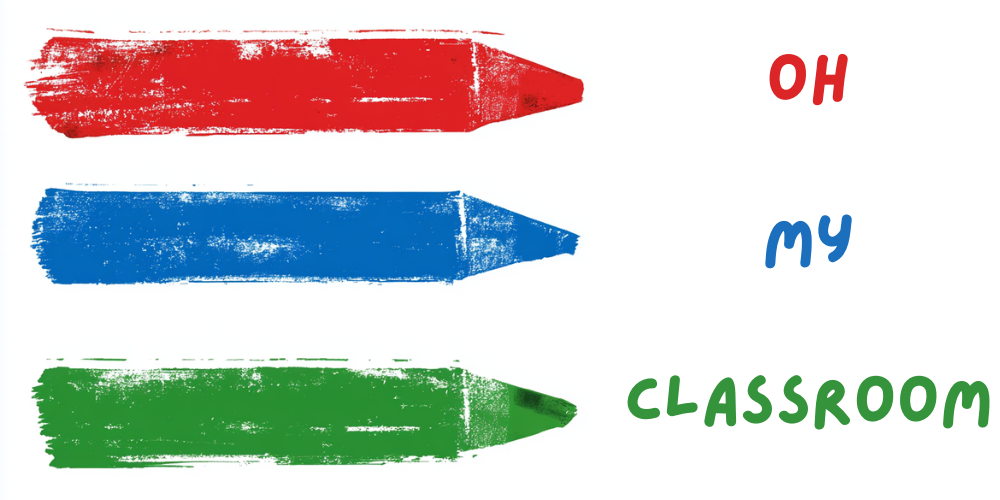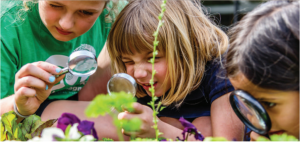The first day of school is an exciting time for both students and teachers, filled with anticipation and curiosity.
In the science classroom, this day offers a wonderful opportunity to engage students right from the start and ignite their passion for the subject.
A well-thought-out introductory activity can set the tone for the entire school year, fostering a sense of wonder and exploration that will carry students through their scientific journey.
Whether it’s a hands-on experiment, a thought-provoking question, or an interactive game, the first day of school science activities should captivate students’ imaginations and spark their interest in the world of science.
We’ll explore some creative and engaging science activities perfect for that exciting first day of school.
“Mystery Flask Challenge”:
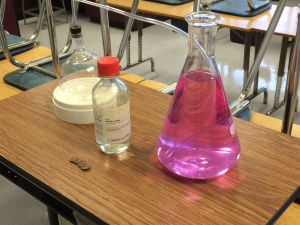
Start the first day of school with an element of surprise by introducing the “Mystery Flask Challenge.” Place a variety of safe, colorful chemicals in sealed flasks around the classroom. As students enter, have them choose a flask and then work in pairs to predict the chemical reaction that will occur when they mix their chosen substances. This activity not only piques their curiosity but also encourages teamwork and the use of scientific reasoning to make predictions. It’s a memorable way to kickstart the school year with hands-on science.
“Solar System Scavenger Hunt”:
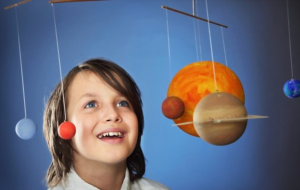
Turn your classroom into a mini solar system and take your students on a thrilling scavenger hunt. Create scaled-down models of the planets and place them strategically around the room. Each planet will have a clue leading to the next one. As students journey through the solar system, they’ll learn interesting facts about each planet and its unique characteristics. This engaging activity not only fosters excitement about space but also helps students learn about scale and relative distances within our solar system.
“Egg Drop Challenge”:

Get your students’ creative and scientific juices flowing with the classic “Egg Drop Challenge.” Provide each student or group with a raw egg, some basic materials (such as cardboard, tape, and cotton), and a set of rules. Challenge them to design and build a contraption that will protect their egg from breaking when dropped from a height. This activity encourages critical thinking, problem-solving, and experimentation while creating an atmosphere of excitement on the first day of school.
Related: 25 First Day of Preschool Activities for 3 – 5 year Olds
“Plant Detectives”:
Start the school year by nurturing young scientists with a “Plant Detectives” activity. Distribute small potted plants or seeds to your students and ask them to investigate and record observations about their plants over the course of several weeks. This activity not only introduces students to the scientific method but also helps them develop responsibility as they care for their plants. They can track growth, changes in leaves, and even perform simple experiments to learn about plant needs like sunlight, water, and nutrients.
“Volcano Eruptions”:
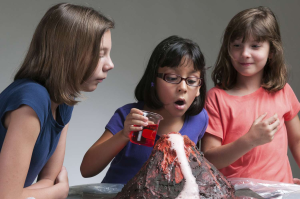
Capture the attention of your students with an explosive start to the school year by conducting mini volcano eruptions. Set up a table with all the necessary materials: baking soda, vinegar, dish soap, and red food coloring. Each student can take turns creating their volcano using playdough or clay, then adding the ingredients to cause an exciting eruption. This hands-on activity introduces basic chemistry concepts, such as chemical reactions and the release of gases. Plus, it’s a fun and memorable way to spark enthusiasm for the upcoming science curriculum.
“Microscope Madness”:
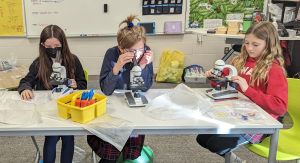
Introduce your students to the world of microscopy by setting up microscope stations around the classroom. Provide a variety of prepared slides with interesting specimens such as plant cells, animal cells, and microorganisms. Allow students to take turns using the microscopes to explore and draw what they observe. This activity not only ignites curiosity but also teaches them how to handle scientific equipment effectively.
“Water Rocket Launch”:

Kick off the school year with a literal blast by organizing a water rocket launch. In this activity, students design and construct water rockets using empty soda bottles and other materials. They’ll fill the bottles with water, pressurize them with air, and then launch them into the air to see how high they can go. This hands-on experiment introduces concepts of physics, pressure, and aerodynamics, all while sparking excitement.
“Science Bingo Icebreaker”:

Create a Science Bingo game with squares containing different science-related questions or challenges. Students mingle and talk to their classmates to find someone who can answer each question or complete each challenge. For example, “Find someone who has visited a science museum” or “Find someone who can name the planets in our solar system.” This activity encourages social interaction, teamwork, and learning about each other’s interests in science.
Related: 20 Excited First Day Activities for Preschool
“Magnetic Madness”:
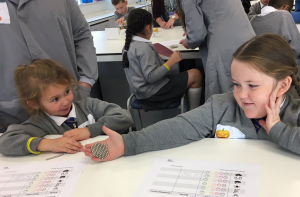
Explore the fascinating world of magnetism on the first day of school with a “Magnetic Madness” activity. Provide various magnets and objects made of different materials (e.g., metals, plastic, wood) and ask students to predict which items will be attracted to the magnets. They can test their predictions and learn about magnetic properties. This hands-on exploration introduces students to the basics of magnetism in a fun and interactive way.
“Build a Rube Goldberg Machine”:
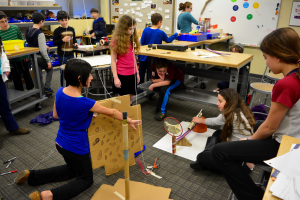
Challenge your students to work together to create a Rube Goldberg machine. Provide a variety of everyday objects like dominoes, ramps, pulleys, and balls, along with a simple task, such as turning on a light switch. Groups of students must design and build a machine that accomplishes the task in the most convoluted and creative way possible. This activity not only fosters teamwork and problem-solving but also demonstrates principles of physics and engineering.
“DNA Necklace Creation”:

Introduce students to the fascinating world of genetics and DNA by having them create their own DNA necklaces. Provide them with colorful beads representing the four DNA bases (adenine, thymine, cytosine, and guanine), and guide them in creating a DNA strand necklace following a given DNA sequence. This hands-on activity not only teaches about DNA structure but also allows for creativity and personalization.
“Fossil Excavation Adventure”:
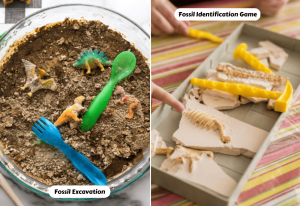
Turn your classroom into an archaeological dig site by burying small toy fossils (or even simple “fossil” imprints in clay) in a designated area. Equip students with brushes, shovels, and excavation tools to carefully unearth these fossils. As they uncover and identify the fossils, they’ll learn about paleontology, excavation techniques, and the history of life on Earth.
“The Great Egg Race”:

Challenge your students to design and build a contraption that will safely transport a raw egg from a designated height (e.g., a balcony or classroom window) to the ground without breaking it. Provide them with a variety of materials to choose from and encourage them to apply engineering principles to protect their “precious cargo.” This activity promotes teamwork, problem-solving, and an understanding of physics.
“The Scientific Autobiography”:
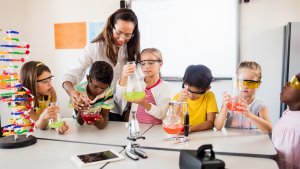
Ask each student to create a “Scientific Autobiography” that tells the story of their personal journey with science. They can include photos, drawings, and written descriptions of their favorite science-related experiences, experiments, or discoveries. This activity not only helps students reflect on their own interests but also allows them to share and connect with their peers’ experiences.
“Balloon-Powered Cars”:

Engage students in a hands-on engineering challenge by having them design and build balloon-powered cars using simple materials like balloons, straws, and wheels. After constructing their cars, students can compete to see whose car travels the farthest using the power of air pressure. This activity introduces concepts of physics, engineering, and the scientific method while fostering creativity and friendly competition.
“Sensory Exploration”:
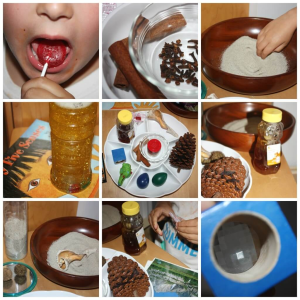
Create a sensory exploration station with various items that represent different senses (e.g., feathers for touch, scented items for smell, blindfolds for sight, and different foods for taste). Have students rotate through the stations and record their observations. Discuss how our senses help us gather information and make scientific observations.
“Biodiversity Bingo”:
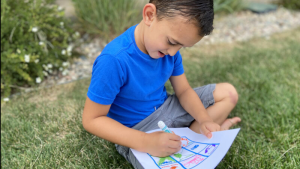
Develop a Bingo game with squares containing pictures or names of different animal and plant species. Students can play this game while walking around the school grounds or a nearby park, trying to spot and identify the species on their Bingo cards. This activity not only teaches about biodiversity but also gets students outdoors and engaged with the natural world.
“Paper Airplane Physics”:
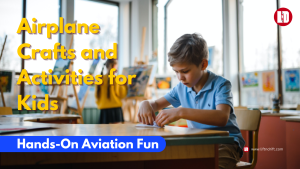
Combine creativity and physics with a paper airplane design challenge. Provide students with sheets of paper and challenge them to create paper airplanes that can fly the farthest, do tricks, or land accurately. Encourage them to experiment with different designs and folding techniques, and then have a friendly competition to see whose airplane performs the best.
“Sink or Float Experiment”:
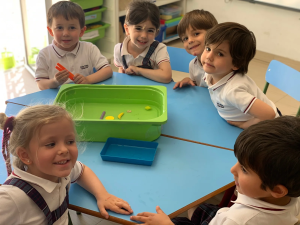
Set up a simple sink or float experiment with a variety of objects and a large container of water. Students can take turns predicting whether each object will sink or float before testing it. This activity not only introduces concepts of density and buoyancy but also encourages students to make hypotheses and test their ideas.
“Sound Scavenger Hunt”:
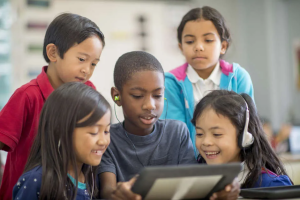
Turn your classroom or school campus into a sound exploration zone. Provide students with sound recording devices (such as smartphones or voice recorders) and ask them to venture out to collect various sounds. They can record natural sounds, like bird calls, as well as human-made sounds, such as footsteps or classroom noises. When they return, students can share and analyze the collected sounds, discussing the physics and characteristics of sound waves.
Related: 100 Exciting Questions for First Day of School
